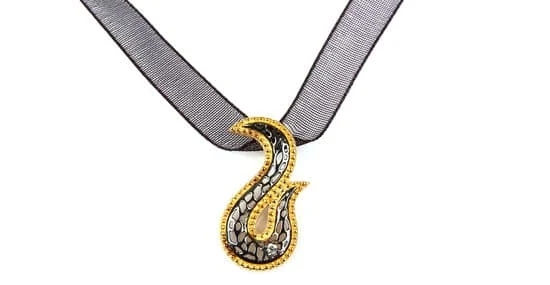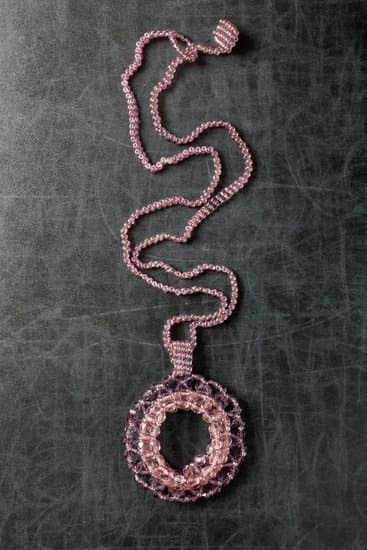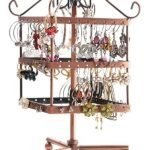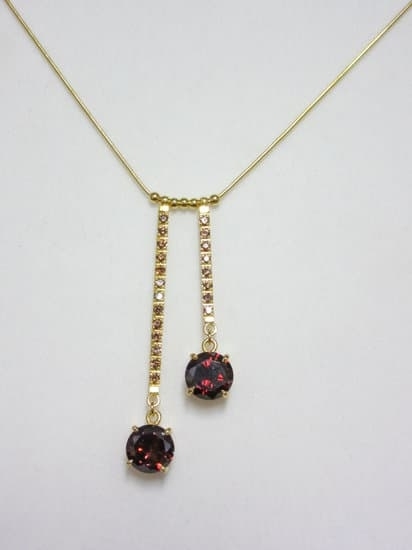Feathers have long captivated the human imagination, adorning jewelry and accessories with their delicate beauty and symbolic meaning. From ancient civilizations to contemporary fashion, feathers have held cultural significance across various societies. In this introductory section, we will explore the allure and symbolism behind feathered jewelry, as well as its historical importance in different cultures.
Throughout history, feathers have been prized for their connection to nature and spirituality. They symbolize freedom, flight, and transcendence from earthly bonds. Their lightweight and ethereal qualities make feathers an alluring choice for adornments that add a touch of grace and elegance to jewelry.
The fascination with feathered jewelry can be traced back to ancient civilizations such as Egypt, Mesopotamia, Greece, and China where feathers were incorporated into jewelry designs as symbols of power, divinity, or protection. Feathers also played a significant role in indigenous cultures like Native American tribes who believed feathers carried spiritual meaning and acted as a bridge between humans and the divine.
In this article, we will delve into the rich history of feathered jewelry; exploring its early origins in ancient civilizations, its cultural significance in diverse traditions such as Native American cultures, African tribes, and traditional Asian cultures. We will also examine the role of feathers as symbols of power in ancient societies like Egypt and Mesopotamia before examining the contemporary debate surrounding cultural appropriation associated with feathered accessories.
Join us on this journey through time as we unravel the captivating history of feathered jewelry and delve into the ongoing discourse surrounding its cultural appropriation. Through mindful appreciation and responsible engagement with these aesthetics, we can support artisans while fostering cross-cultural understanding in an ever-evolving world.
History of Feathered Jewelry
Early Origins of Feathered Jewelry in Ancient Civilizations
Feathered jewelry has a long and rich history, dating back to ancient civilizations. In these early societies, feathers were highly prized for their rarity and unique beauty. The Egyptians, for example, adorned themselves with elaborate feathered headdresses and necklaces made from precious materials such as gold and gemstones. Feathers were considered a symbol of power and divinity in ancient Egypt, with certain birds like the falcon representing deities such as Horus.
Similarly, the ancient Greeks incorporated feathers into their jewelry designs as well. They believed that feathers possessed magical properties and could bring good luck and protection. Greek artisans created delicate earrings and brooches featuring feather motifs, often using techniques like granulation and filigree work to enhance the intricate details.
Evolution of Feathered Jewelry through Different Historical Periods
As time passed, feathered jewelry evolved alongside changing fashion trends and cultural influences. During the Renaissance period in Europe, feathers became popular adornments for both men and women. Plumes from exotic birds were highly sought after, leading to the emergence of ornate feathered fans, headpieces, and accessories crafted from luxurious materials like silk and velvet.
In the Victorian era, feathered jewelry took on a romantic and naturalistic aesthetic. Pieces often featured delicate bird motifs crafted from gold or silver, with intricate detailing mimicking the textures of real feathers. Some designs even incorporated actual bird feathers as embellishments.
The Art Nouveau movement of the late 19th century embraced feathers as a source of inspiration for jewelry design. Organic forms such as peacock feathers influenced this artistic style, resulting in pieces characterized by fluid lines and bold asymmetry.
Notable Designs and Techniques Used in Feathered Jewelry
Throughout history, numerous artisans have contributed to the creation of stunning feathered jewelry pieces using various techniques and designs. In ancient civilizations, metalsmiths employed techniques like repoussé and champlevé to intricately carve feather motifs onto jewelry surfaces.
During the Art Deco period of the 1920s and 1930s, jewelry designs featuring marcasite or diamonds were popular, with feathers serving as motifs within geometric compositions. Feathers were often depicted in a stylized manner using clean lines and contrasting materials.
Contemporary designers continue to experiment with feathers by combining them with unconventional materials and techniques. Some artisans incorporate feathers into contemporary minimalist designs, creating sleek and elegant pieces that maintain a connection to ancient traditions. Others explore mixed media approaches, fusing feathers with materials like resin or porcelain for innovative and avant-garde creations.
The history of feathered jewelry reflects not only the artistic evolution of these adornments but also the cultural significance associated with feathers. From ancient civilizations to contemporary fashion trends, feathered jewelry continues to captivate our imagination and symbolize various meanings across different cultures.
Cultural Significance of Feathered Jewelry
Feathered jewelry holds a deep cultural significance in various traditions around the world. This section will delve into the specific cultural contexts in which feathered jewelry is present, shedding light on the symbolism and meanings attached to it.
In Native American cultures, feathered jewelry carries profound symbolism and spiritual beliefs. Feathers are seen as sacred gifts from birds, symbolizing strength, wisdom, honor, and connection to the spiritual realm. Many tribes use feathers in their traditional regalia and ceremonial headdresses as a way to communicate with and honor their ancestors.
Each type of feather used has its own symbolic meaning, such as eagle feathers representing courage and leadership. The significance of feathered jewelry in Native American cultures cannot be understated, as it plays a central role in preserving their heritage and passing on ancestral traditions.
Similarly, African tribes have a rich history of using feathers in their adornments for various cultural rituals. Feathers are often worn as headpieces or incorporated into clothing to signify important life events such as coming-of-age ceremonies or weddings. In some tribes, certain types of feathers are believed to possess protective qualities or to bring good fortune. Feathered accessories not only serve as decorative elements but also convey messages about social status, identity, and communal belonging.
Feathered accessories also hold great symbolism in traditional Asian cultures. For example, in China’s Qing Dynasty (1644-1912), crane feathers were highly valued for their perceived auspicious qualities symbolizing longevity and immortality. Japanese culture also incorporates feathers into intricate hair ornaments called “kanzashi,” which are worn during special occasions like weddings or festivals.
Each feather used is carefully chosen for its unique symbolism related to love, purity, luck, or protection. Feathered jewelry thus becomes an integral part of celebrating cultural customs and transmitting values between generations.
| Feathered Jewelry Tradition | Symbolism and Meanings |
|---|---|
| Native American | Strength, wisdom, honor, spiritual connection |
| African Tribes | Rituals, social status, identity, protection |
| Traditional Asian Cultures | Auspicious qualities, longevity, love, purity, luck, protection |
The cultural significance of feathered jewelry demonstrates the intricate relationship between adornment and cultural identity. It is essential to recognize and respect these traditions when incorporating feathered jewelry into contemporary fashion. By understanding the diverse meanings behind feathered accessories, individuals can engage in a more informed and appreciative dialogue that celebrates different cultures while avoiding cultural appropriation.
Feathers as a Symbol of Power
In ancient societies, feathers held deep symbolic significance and were often associated with power, authority, and divinity. Across cultures and civilizations, feathers were used as a way to convey status, royalty, and spiritual connection. Understanding the role of feathers as a symbol of power in ancient societies provides important insights into their cultural significance and the fascination with feathered jewelry.
Feathers as a status symbol in ancient Egypt and Mesopotamia
In ancient Egypt, feathers were closely tied to the god Ma’at, who represented truth, balance, and order. The ostrich feather was particularly revered, symbolizing justice and righteousness. Pharaohs often wore headdresses adorned with ostrich feathers as a visual representation of their divine authority. Feathers were also used to decorate royal clothing or incorporated into intricate accessories such as collars or anklets.
Similarly, in Mesopotamia, feathers held great symbolism for both secular leaders and deities. Kings and queens would adorn themselves with feathered regalia to emphasize their power and position within society. Feathers were seen as objects of protection from evil forces and played an integral role in religious ceremonies.
Feathers as a marker of royalty in ancient Mayan and Aztec cultures
The ancient Maya civilization viewed feathers as a manifestation of celestial energy and associated them with the gods’ ability to fly between the earthly realm and the heavens. The Quetzal bird’s emerald green tail feathers were particularly cherished by the Mayans due to their association with the divine serpent deity Quetzalcóatl. These precious plumages were reserved exclusively for rulers and high-ranking elites who wore them during ceremonial events.
Similarly, in Aztec culture, feathers held immense importance as symbols of power and nobility. Eagle feathers were highly sought after for their connection to Huitzilopochtli, the god of war. Warriors who displayed exceptional valor in battle were awarded with eagle feather headdresses, known as “quetzalapaltiliztli,” signifying their elite status.
Feathers as a representation of divinity in various religious contexts
Feathers also played a significant role in religious contexts across civilizations. In ancient Greece, the owl’s feathers were associated with the goddess Athena, symbolizing wisdom and insight. Greece’s famous helmeted Athena Parthenos statue was often depicted wearing an owl-feathered helmet.
In Native American cultures, feathers were deeply rooted in spiritual beliefs and used to connect with the divine. Different bird feathers held specific meanings and represented certain virtues or qualities. They were integrated into ceremonial objects such as headdresses, fans, and prayer sticks to enhance communication with the spirit world.
The use of feathers as symbols of power not only highlights their intrinsic beauty but also reveals the rich cultural heritage and profound beliefs of ancient societies. By incorporating feathered jewelry inspired by these traditions, it is crucial to engage in responsible appreciation and ensure respect for the cultural significance behind this symbolism.
Feathered Jewelry in Contemporary Fashion
Feathers have become a popular and alluring adornment in contemporary fashion, capturing the imagination of designers and wearers alike. However, the use of feathers in jewelry has sparked a heated debate regarding cultural appropriation. Cultural appropriation refers to the adoption or theft of elements from one culture by another, often without proper understanding or respect for their cultural significance. In the case of feathered jewelry, concerns have been raised about the misrepresentation and commodification of indigenous cultures.
The controversy surrounding cultural appropriation emphasizes the importance of understanding and respecting the origins and meanings behind feathered jewelry. Feathers hold deep symbolism and spiritual significance in many indigenous cultures around the world. They are often used as a connection to nature, spirituality, ancestry, and power. Native American cultures, African tribes, and traditional Asian cultures all incorporate feathers into their adornments with distinctive meanings and rituals.
Proponents argue that when individuals from dominant cultures appropriate feathers as mere decorative accessories without any understanding or acknowledgement of their cultural significance, it not only perpetuates stereotypes but also erases the rich history and traditions behind these symbols. Critics argue that this type of appropriation fails to honor the sacredness associated with feathers within these cultures while simultaneously commodifying them for profit.
To create a more respectful engagement with feathered jewelry, it is essential for designers and wearers to seek education about their historical context before incorporating them into fashion. Engaging in cross-cultural collaborations with indigenous artisans can also ensure fair-trade practices that support traditional craftsmanship techniques and artisan communities.
| Indigenous Culture | Symbolism |
|---|---|
| Native American Cultures | Spirituality, connection to nature, protection |
| African Tribes | Cultural identity, status, warding off evil spirits |
| Traditional Asian Cultures | Honor, beauty, good luck and fortune |
Exploring the Fine Line
In recent years, there has been a growing awareness and discourse surrounding cultural appropriation in fashion and accessories, including jewelry adorned with feathers. To understand the controversies surrounding the use of feathers in modern jewelry, it is essential to delve into the definition and understanding of cultural appropriation itself.
Cultural appropriation refers to the adoption or borrowing of elements from another culture, often without proper understanding or respect for their historical and cultural significance. It becomes problematic when those elements are used out of context or without permission from the originating culture. Feathers have deep cultural and spiritual meaning in various indigenous cultures, making them particularly sensitive objects when it comes to appropriation.
On one side of the debate, proponents argue that cultural exchange is an essential part of artistic expression and human creativity. They believe that by appreciating and incorporating diverse cultural influences into modern designs, we promote cross-cultural understanding and celebrate diversity. However, critics argue that when certain cultural symbols are taken out of their original context and commercialized for profit without giving credit or acknowledging the communities they belong to, it perpetuates harmful stereotypes and erodes cultural authenticity.
To navigate this fine line between respectful appreciation and cultural appropriation in feathered jewelry, it is crucial to approach these adornments with mindfulness and respect for their origins. Here are some guidelines for engaging with feathered jewelry ethically:
- Research: Take time to understand the history, symbolism, and significance of feathers in different cultures before incorporating them into your personal style.
- Collaboration: Whenever possible, collaborate directly with artisans from the respective cultures who have a deep understanding of traditional techniques to ensure respectful representation.
- Responsible sourcing: Ensure that feathers used in jewelry are ethically sourced and not obtained through illegal means or harm to wildlife.
- Educate others: Use your platform or voice to educate others about the cultural roots, significance, and importance of feathers in different traditions.
- Support artisans: To ensure fair-trade practices, invest in feathered jewelry made by artisans from the communities that have a historical connection to these adornments.
By following these guidelines and fostering a culture of responsible engagement, we can appreciate feathered jewelry as a beautiful form of artistic expression while respecting its cultural origins and contributing to intercultural understanding.
Reviving Ancient Techniques
In recent years, there has been a growing interest in reviving ancient techniques in the world of feathered jewelry. Designers and artisans have recognized the importance of preserving traditional craftsmanship methods while also embracing innovation in their creations. This section explores the efforts being made to revive ancient techniques, modern adaptations and innovations in feathered jewelry design, as well as promoting cultural exchange and collaboration through ethically sourced materials.
Preservation of traditional craftsmanship techniques is crucial in ensuring that the artistry and cultural heritage associated with feathered jewelry are not lost. Many artisans are dedicated to studying historical records, museum collections, and even collaborating with indigenous communities to learn about their ancestral techniques. By understanding these techniques, they can authentically recreate designs from various time periods and cultures.
However, it is not enough to simply replicate ancient designs; there is also room for innovation in feathered jewelry. Designers are incorporating modern materials such as metal alloys, gemstones, and innovative synthetics to enhance the aesthetic appeal and durability of their creations. By combining traditional craftsmanship with contemporary elements, these innovators are creating unique pieces that honor the past while capturing the essence of modern sensibilities.
Promoting cultural exchange and collaboration through ethically sourced materials is another significant aspect of reviving ancient techniques in feathered jewelry. Artisans are seeking out partnerships with indigenous communities or organizations that support fair-trade practices. By doing so, they ensure that feathers used in their creations are obtained responsibly without causing harm to wildlife or exploiting local communities. This collaborative approach also provides opportunities for knowledge sharing between artisans from different cultural backgrounds, fostering a deeper appreciation for diverse traditions.
Conclusion
In conclusion, the journey through the history of feathered jewelry provides a deeper understanding of its allure and significance. Feathers have held a special place in various cultures across different time periods, symbolizing spiritual beliefs, cultural traditions, and even power dynamics. The use of feathers in contemporary fashion, however, has ignited a cultural appropriation debate that cannot be ignored.
The discourse surrounding cultural appropriation brings attention to the importance of respectful appreciation versus exploitation. While it is crucial to recognize the beauty and significance of feathered jewelry, it is equally essential to acknowledge the origins and meanings behind these adornments. Understanding the historical and cultural context allows us to engage with feather-adorned aesthetics in a mindful and responsible manner.
Respecting artisans and ensuring fair-trade practices should also be at the forefront of any engagement with feathered jewelry. By supporting ethical sourcing and promoting cross-cultural collaboration, we can contribute to preserving traditional craftsmanship techniques while fostering innovation in design.
Ultimately, the evolution of feathered jewelry reflects our ever-changing society. It is important to continue these conversations surrounding cultural appropriation and strive for greater awareness and appreciation. By approaching feather-adorned aesthetics with empathy, knowledge, and respect, we can honor both their historical significance and modern interpretations. Let us embrace this ongoing discourse as an opportunity for growth and meaningful cultural exchange.

Welcome to my jewelry blog! My name is Sarah and I am the owner of this blog.
I love making jewelry and sharing my creations with others.
So whether you’re someone who loves wearing jewelry yourself or simply enjoys learning about it, be sure to check out my blog for insightful posts on everything related to this exciting topic!





